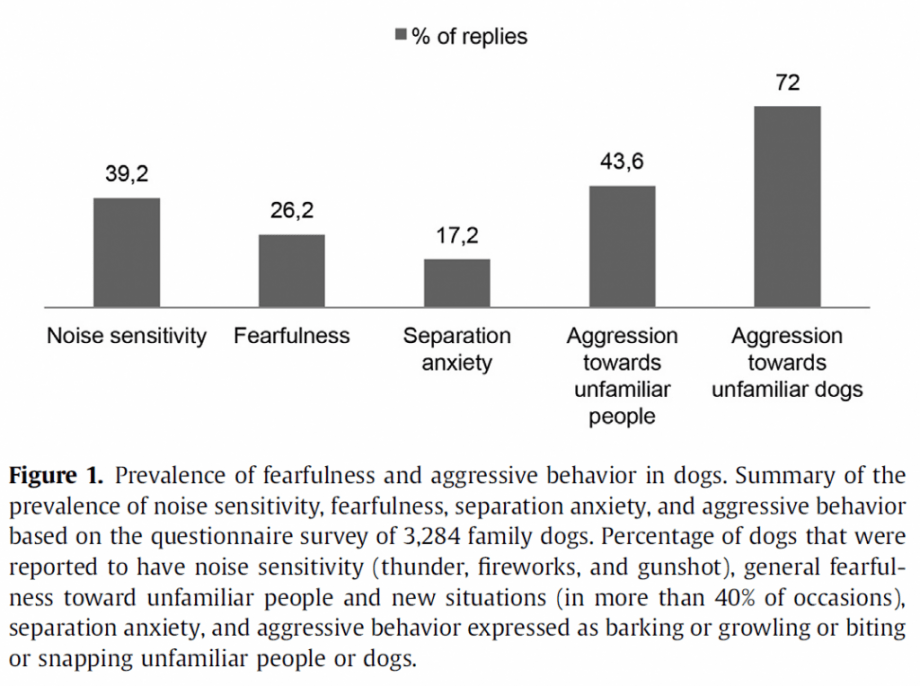Katriina Tiira, Sini Sulkama, and Hannes Lohi, 2016
ABSTRACT
Fear is an emotion needed to survive, but when prolonged and frequent, causes suffering in both humans and animals. The most common forms of canine anxiety are as follows: general fearfulness, noise sensitivity, and separation anxiety are responsible for a large proportion of behavioral problems. Information on the prevalence and comorbidity of different anxieties is necessary for breeding, veterinary behavior, and also for behavioral genetic research, where accurate information of the phenotype is essential. We used a validated owner-completed questionnaire to collect information on dogs' fearfulness (toward unfamiliar people, dogs, in new situations), noise sensitivity, separation anxiety, as well as aggressive behavior. We received 3284 answers from 192 breeds. The prevalence estimate for noise sensitivity was 39.2 %, 26.2% for general fearfulness, and 17.2% for separation anxiety. The owner reported the median onset age for noise sensitivity to be 2 years and varied between 8 weeks and 10 years (N = 407). High comorbidity was observed between different anxieties: fearful dogs had a significantly higher noise sensitivity (P < 0.001) and separation anxiety (P < 0.001) compared with non-fearful dogs. Fearful dogs were also more aggressive compared with non-fearful dogs (P < 0.001). Prevalence estimates of fearfulness, noise sensitivity, and separation anxiety are in agreement with earlier studies. Previous studies have suggested early onset of noise sensitivity during the first year of life; however, we found a later onset with large variation in the onset age. High comorbidity between anxieties suggests a genetic overlap. Fearful personality may predispose to specific anxieties such as noise sensitivity or separation anxiety.
Download full study below



Responses